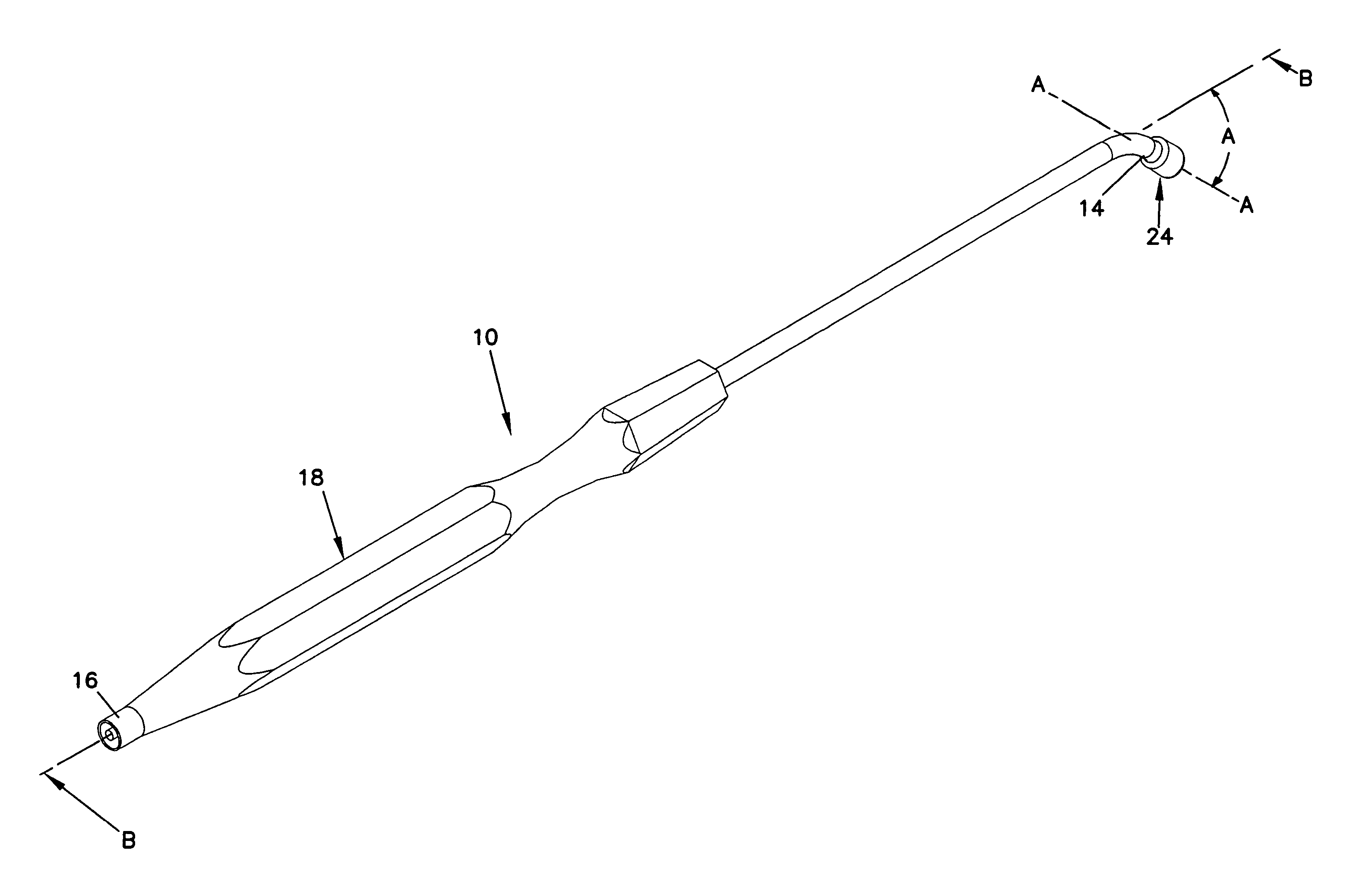Laser-based maze procedure for atrial fibrillation
a laser-based maze and atrial fibrillation technology, which is applied in the field of laser cardiac ablation procedures, can solve the problems of disordered and inefficient contraction of heart muscle, obstructing the achievement of transmural lesions, and disrupting electrical pathways, so as to achieve optimal transmural lesions
- Summary
- Abstract
- Description
- Claims
- Application Information
AI Technical Summary
Benefits of technology
Problems solved by technology
Method used
Image
Examples
Embodiment Construction
[0066] Referring now to the drawing figures in which identical elements are numbered identically throughout, a description of a preferred embodiment of the present invention will now be provided. In the preferred embodiment, the invention is described as a lesion formation tool in the form of a surgical wand for applying laser energy to the epicardial surface of the heart to create a transmural ablation line along the heart. It will be appreciated that the atraumatic nature of the distal tip of the invention, as will be described, could also be used in a tool for creating such a line by applying the energy against the endocardial surface of the heart. As used in this application, the term “ablation” is used in the context of creating necrosed tissue in the myocardium while avoiding tissue perforation or removal.
Atraumatic Atrial Laser
[0067] Referring first to FIGS. 1-3, a lesion formation tool is shown as a laser surgical wand 10 having an elongated shaft 12 with a distal end 14 ...
PUM
 Login to View More
Login to View More Abstract
Description
Claims
Application Information
 Login to View More
Login to View More - R&D
- Intellectual Property
- Life Sciences
- Materials
- Tech Scout
- Unparalleled Data Quality
- Higher Quality Content
- 60% Fewer Hallucinations
Browse by: Latest US Patents, China's latest patents, Technical Efficacy Thesaurus, Application Domain, Technology Topic, Popular Technical Reports.
© 2025 PatSnap. All rights reserved.Legal|Privacy policy|Modern Slavery Act Transparency Statement|Sitemap|About US| Contact US: help@patsnap.com



